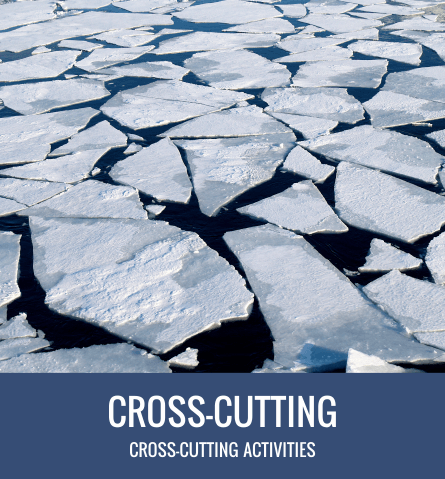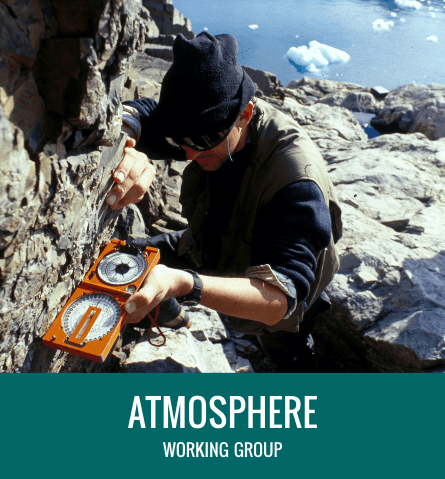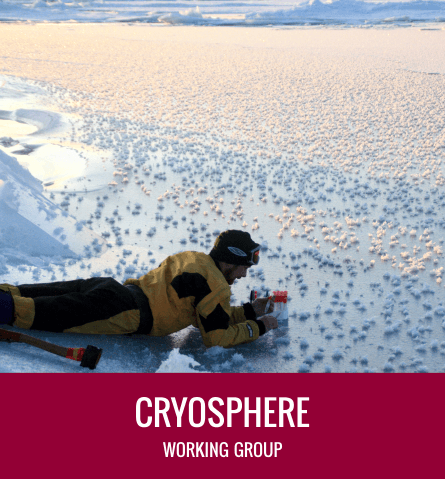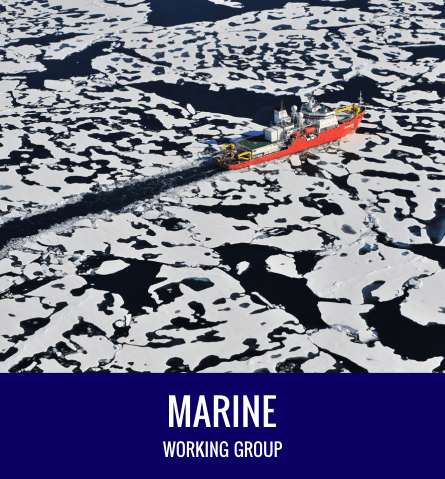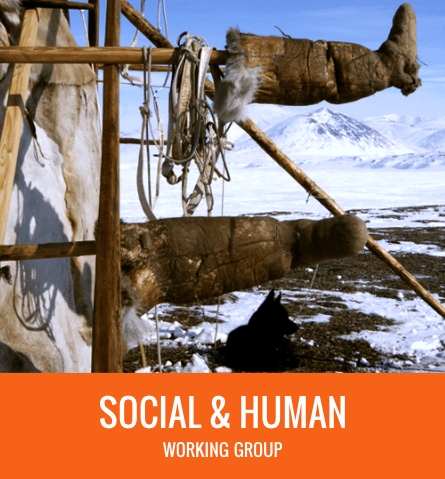 The Multidisciplinary drifting Observatory for the Study of Arctic Climate (MOSAiC) is the first year-round expedition into the central Arctic exploring the coupled Arctic climate system. The project with a total budget exceeding € 150 Million has been designed by an international consortium of leading polar research institutions, under the umbrella of the International Arctic Science Committee (IASC) and led by the Alfred Wegener Institute, Helmholtz Centre for Polar and Marine Research (AWI), Arctic and Antarctic Research Institute (AARI) and the University of Colorado, Cooperative Institute for Research in Environmental Sciences (CIRES).
The Multidisciplinary drifting Observatory for the Study of Arctic Climate (MOSAiC) is the first year-round expedition into the central Arctic exploring the coupled Arctic climate system. The project with a total budget exceeding € 150 Million has been designed by an international consortium of leading polar research institutions, under the umbrella of the International Arctic Science Committee (IASC) and led by the Alfred Wegener Institute, Helmholtz Centre for Polar and Marine Research (AWI), Arctic and Antarctic Research Institute (AARI) and the University of Colorado, Cooperative Institute for Research in Environmental Sciences (CIRES).
After more than a year in the Central Arctic on 12 October, the research icebreaker Polarstern returned to her homeport in Bremerhaven. Accompanied by a ‘welcome committee’ of ships that came to greet, the ship entered the North Lock with the morning high tide, at ca. 9:00 am. At port, Expedition Leader Markus Rex, Captain Thomas Wunderlich and the entire team from the final leg of the expedition were welcomed by e.g. Federal Minister of Research Anja Karliczek and the Director of the Alfred Wegener Institute, Antje Boetius. The event marked the end of a record-breaking expedition: never before had an icebreaker been near the North Pole in winter, and never before could international researchers comprehensively gather such urgently needed climate data in the region of the world hardest hit by climate change. Drifting with the ice, they endured the extreme cold, Arctic storms, a constantly changing floe – and the challenges posed by the coronavirus pandemic.
On 20 September 2019 Polarstern departed from the Norwegian port of Tromsø, bound for the Central Arctic, the epicentre of climate change. Once there, the ship allowed itself to become trapped in the ice, and began a one-year-long drift across the North Pole, completely at the mercy of natural forces – the route and speed were solely determined by the ice drift, powered by wind and currents. Over the five legs of the expedition, a total of 442 researchers, Polarstern crew members, young investigators, teachers and members of the press took part. Seven ships, several aircrafts and more than 80 institutions from 20 countries were involved. The researchers, who hailed from 37 countries, had a common goal: to investigate complex interactions in the climate system between the atmosphere, ice and ocean, as well as life in the Central Arctic, so as to better represent them in climate models. Now they have returned home with a wealth of impressions from the rapidly transforming Arctic, and with an unparalleled treasure trove of data, which an entire generation of climate researchers will focus on analysing.
Even when, due to the coronavirus pandemic, virtually every other expedition around the globe was cancelled, thanks to the broad support of the international scientific community and to the tireless efforts of the entire team, MOSAiC was able to continue. In the early summer, Polarstern had to briefly leave her floe and several autonomous stations for a personnel transfer. Four weeks later, a new team commenced fieldwork on the ice, continuing their efforts right up to the last day, when the floe (as predicted) reached the ice edge to the east of Greenland, began breaking up under the influence of the waves, and completed its typical lifecycle. To explore the last piece of the puzzle in the sea ice’s annual cycle – the formation of new ice at summer’s end – the expedition then headed farther north, crossed the North Pole, and moored to a second floe in its vicinity.
As such, despite all obstacles, the MOSAiC expedition achieved its goal: to monitor the epicentre of climate change more precisely than ever before, and over the span of an entire year – and by doing so, to take a crucial step forward in our understanding of the Earth’s climate system and how it is changing. The total cost of the expedition was ca. 150 million euros, with roughly two-thirds being contributed by Germany.
Website: https://mosaic-expedition.org/
Contacts:
Markus Rex, MOSAiC coordinator
Anja Sommerfeld, MOSAiC manager
Annette Rinke, MOSAiC modeling co-coordination and Vice-Chair IASC AWG
Article from the IASC Bulletin 2021.

